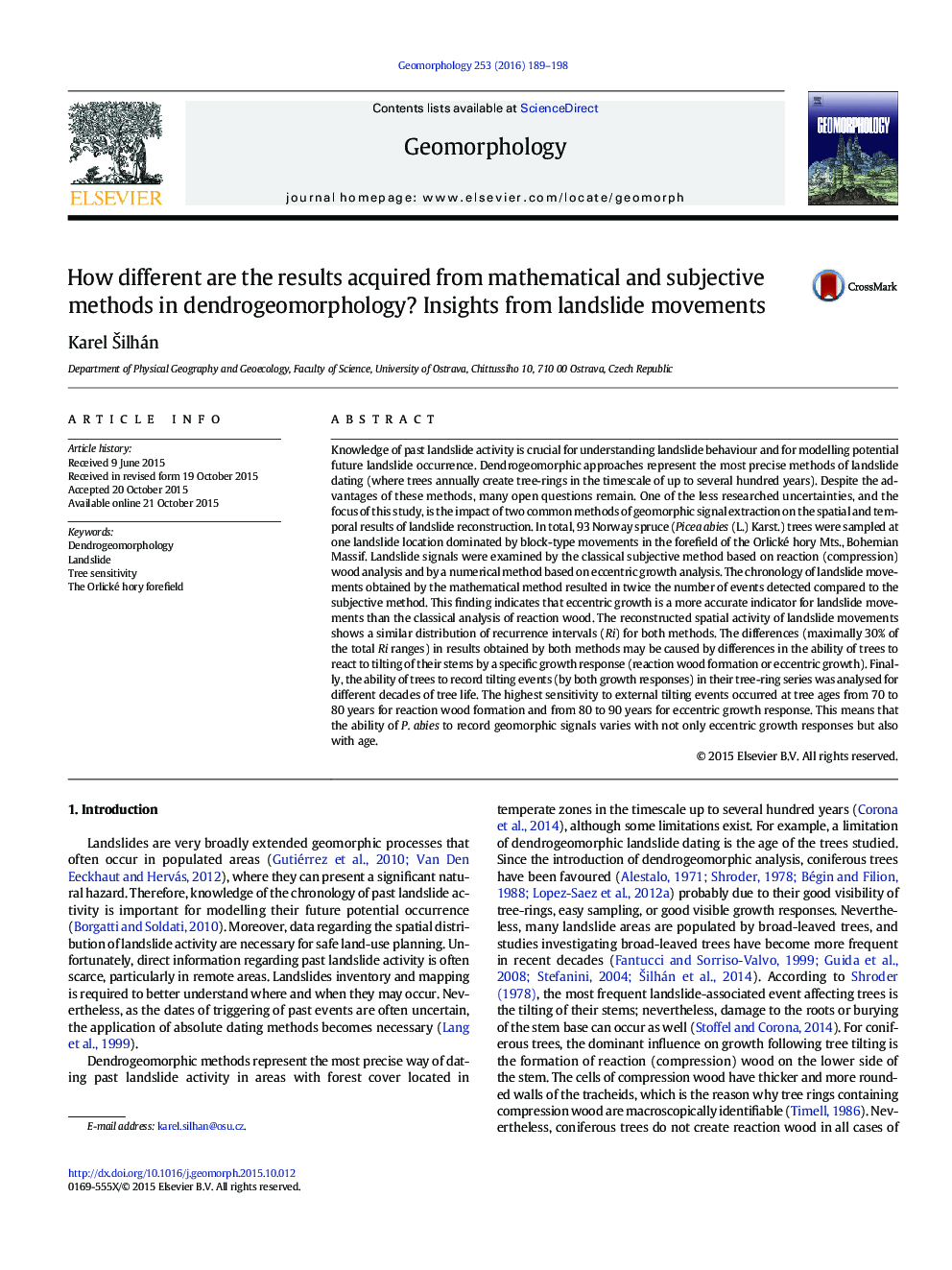| کد مقاله | کد نشریه | سال انتشار | مقاله انگلیسی | نسخه تمام متن |
|---|---|---|---|---|
| 6431693 | 1635396 | 2016 | 10 صفحه PDF | دانلود رایگان |
- 93 individuals of P. abies trees were sampled on the same landslide area.
- Reaction wood and eccentric growth analysis was applied on each tree.
- Eccentric growth recorded more events than reaction wood.
- The sensitivity of P. abies to landslide events was evaluated.
Knowledge of past landslide activity is crucial for understanding landslide behaviour and for modelling potential future landslide occurrence. Dendrogeomorphic approaches represent the most precise methods of landslide dating (where trees annually create tree-rings in the timescale of up to several hundred years). Despite the advantages of these methods, many open questions remain. One of the less researched uncertainties, and the focus of this study, is the impact of two common methods of geomorphic signal extraction on the spatial and temporal results of landslide reconstruction. In total, 93 Norway spruce (Picea abies (L.) Karst.) trees were sampled at one landslide location dominated by block-type movements in the forefield of the Orlické hory Mts., Bohemian Massif. Landslide signals were examined by the classical subjective method based on reaction (compression) wood analysis and by a numerical method based on eccentric growth analysis. The chronology of landslide movements obtained by the mathematical method resulted in twice the number of events detected compared to the subjective method. This finding indicates that eccentric growth is a more accurate indicator for landslide movements than the classical analysis of reaction wood. The reconstructed spatial activity of landslide movements shows a similar distribution of recurrence intervals (Ri) for both methods. The differences (maximally 30% of the total Ri ranges) in results obtained by both methods may be caused by differences in the ability of trees to react to tilting of their stems by a specific growth response (reaction wood formation or eccentric growth). Finally, the ability of trees to record tilting events (by both growth responses) in their tree-ring series was analysed for different decades of tree life. The highest sensitivity to external tilting events occurred at tree ages from 70 to 80Â years for reaction wood formation and from 80 to 90Â years for eccentric growth response. This means that the ability of P. abies to record geomorphic signals varies with not only eccentric growth responses but also with age.
Journal: Geomorphology - Volume 253, 15 January 2016, Pages 189-198
